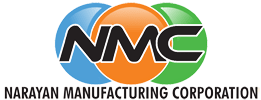What is ISO 9001:2015?
ISO 9001:2015 is an international standard for quality management systems (QMS). It is part of the ISO 9000 family of standards, which are designed to help organizations ensure they meet the needs of customers and other stakeholders while meeting statutory and regulatory requirements related to a product or program. The standard is based on several quality management principles including a strong customer focus, the involvement of top management, a process approach, and continual improvement.
Key Components of ISO 9001:2015
- Context of the Organization: Understanding the organization’s context and determining the internal and external issues relevant to its purpose and strategic direction.
- Leadership: Emphasizing the importance of top management in integrating the QMS into business processes and ensuring a customer-focused approach.
- Planning: Addressing risks and opportunities, quality objectives, and the planning of changes.
- Support: Managing resources, competence, awareness, communication, and documented information to support the QMS.
- Operation: Planning and controlling production and service provision processes, including determining customer requirements and managing relationships with suppliers.
- Performance Evaluation: Monitoring, measuring, analyzing, and evaluating the QMS, including internal audits and management reviews.
- Improvement: Continual improvement of the QMS, addressing nonconformities, and taking corrective actions.
Significance of ISO 9001:2015 Certification
Benefits for Organizations
- Improved Customer Satisfaction: By consistently meeting customer requirements and enhancing customer satisfaction, organizations can build stronger relationships and improve their market reputation.
- Operational Efficiency: The process-oriented approach of ISO 9001:2015 helps organizations streamline their operations, reduce waste, and improve efficiency.
- Risk Management: The standard emphasizes risk-based thinking, helping organizations identify and mitigate risks that could impact product quality and customer satisfaction.
- Continual Improvement: A core principle of ISO 9001:2015 is the ongoing improvement of processes and systems, which can lead to better performance and competitive advantage.
- Compliance and Regulatory Requirements: Certification demonstrates that an organization meets international quality standards, which can be beneficial for compliance with statutory and regulatory requirements.
- Market Access: ISO 9001:2015 certification is often a prerequisite for doing business with certain customers or in specific markets, making it easier for organizations to access new opportunities.
Benefits for Customers
- Quality Assurance: Customers can trust that products and services will consistently meet their requirements and expectations.
- Reliability: Certified organizations are more likely to deliver reliable and high-quality products and services.
- Customer Focus: The standard emphasizes understanding and meeting customer needs, leading to better customer experiences and satisfaction.
Benefits for Employees
- Clear Roles and Responsibilities: ISO 9001:2015 helps define roles and responsibilities within the organization, leading to better clarity and accountability.
- Training and Development: The standard promotes competence and awareness, ensuring that employees have the necessary skills and knowledge to perform their tasks effectively.
- Engagement and Involvement: Employees are often more engaged when they understand how their work contributes to organizational goals and customer satisfaction.
Certification Process
- Gap Analysis: An organization may conduct a gap analysis to compare its current QMS against the requirements of ISO 9001:2015.
- Implementation: Implementing the necessary changes to align with the standard, which may involve process improvements, documentation updates, and training.
- Internal Audit: Conducting internal audits to ensure the QMS is effectively implemented and maintained.
- Management Review: Top management reviews the QMS to ensure its continuing suitability, adequacy, and effectiveness.
- Certification Audit: An external certification body conducts an audit to verify that the organization meets the requirements of ISO 9001:2015.
- Certification: If the organization passes the audit, it receives ISO 9001:2015 certification, which is valid for three years, subject to annual surveillance audits.
Conclusion
ISO 9001:2015 certification is a globally recognized mark of quality that signifies an organization’s commitment to meeting customer requirements and continuously improving its processes. By adhering to the principles of the standard, organizations can enhance their operational efficiency, customer satisfaction, and market competitiveness. For customers, it provides assurance of quality and reliability, while for employees, it offers clarity, training, and engagement opportunities.




